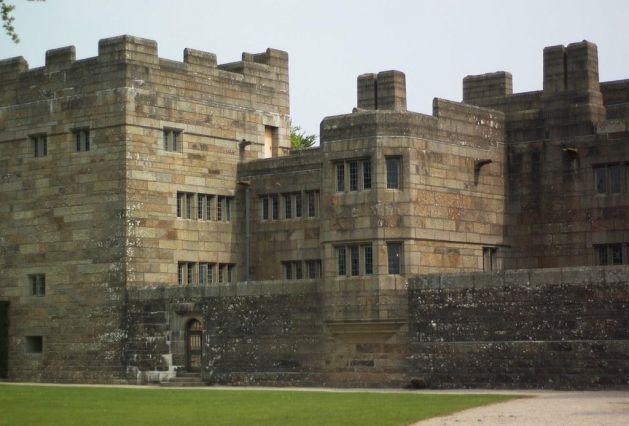 Castle Drogo in south-west England, designed by Edwin Lutyens, is a prime example of pastiche. Image: Rob L Davis / CC.
Castle Drogo in south-west England, designed by Edwin Lutyens, is a prime example of pastiche. Image: Rob L Davis / CC.
Pastiche is a word used to describe work that emulates existing art, theatre and literature as a means to celebrate the work that inspires it
The word pastiche is used to describe creative works that deliberately reference existing work. Pastiche, unlike parody, more commonly imitates other work of art, theatre, literature and design as a means to celebrate rather than to make fun of the original. However, when used to describe architecture, the word often has a negative context.
The word is originally from the Italian ‘pasticcio’, which is a form of pie-filing made from a mix of ingredients. The word has been adopted to describe this imitative form of art because the art work has many creators – the original and the mimic.
In architecture, pastiche is used to describe developments that mimic works and the styles of significant architects. There are many examples from 20th century architecture, including the works of Edwin Lutyens and Ebenezer Howard who designed and built Neo-Georgian developments in Britain. The work of Le Corbusier and the Bauhaus designers has also been the inspiration for many pastiche imitations.
Pastiche in the field of literature is often humorous, not derogatory. Postmodern pastiche was an intentionally witty reimagining of the original, usually tongue in cheek. In film, music and theatre, the word is also used to describe work that is an eclectic collection of the work that came before it. Quentin Tarantino is famous for using elements of other films to inspire his own, creating patchworks of pastiche.
When it comes to the built environment, the description pastiche is often thought of as being a bit of a brush off, less inventive credit is given to pastiche buildings as is given to pastiche art or writing. There are many cases when pastiche was actively discouraged by developers. The concern was that work had to be original to be worthy, so buildings that featured the Corbusian external staircase of floating wall, or glass walls like those used by Mies van der Rohe were seen as unauthentic and less worthy and than buildings that were more original in look.
One example of pastiche is in housing estates in the suburbs of big cities in the US, which lacked lead architects and so took inspiration from existing models in the hopes of glamourising the homes they sold by referencing more prestigious work. Faux chimneys and exaggerated gables were amongst the features that often appeared in pastiche houses.
More interesitng that those architects who have used pastiche to whimsically play with historical forms, from Lutyens to the Postmodernists. The best pastiche buildings can create a sense of playfulness or nostalgia just as well as any truly original structure.


















